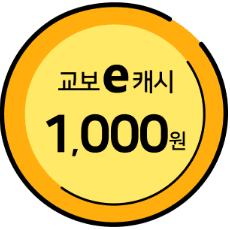학술논문
The Multiple Menu Model for Developing Differentiated Curriculum
이용수 0
- 영문명
- The Multiple Menu Model for Developing Differentiated Curriculum
- 발행기관
- 대한사고개발학회
- 저자명
- Joseph S. Renzulli
- 간행물 정보
- 『The International Journal of Creativity & Problem Solving』제14권 제1호, 75~85쪽, 전체 11쪽
- 주제분류
- 사회과학 > 교육학
- 파일형태
- 발행일자
- 2004.04.30
4,120원
구매일시로부터 72시간 이내에 다운로드 가능합니다.
이 학술논문 정보는 (주)교보문고와 각 발행기관 사이에 저작물 이용 계약이 체결된 것으로, 교보문고를 통해 제공되고 있습니다.

국문 초록
영문 초록
Teachers and others associated with the educational process often create successful lessons plans that they would like to tum into curricular units either to publish or share with their colleagues. As these emerging curriculum writers try to use these lesson plans as a basis for writing curriculum, they soon realize that developing curriculum is a difficult and demanding process. They also find that there is little practical guidance available to help them translate their ideas into a publishable unit of instruction. A second dilemma that emerges is illustrated with the following question: How does a curriculum developer balance rigor and content authenticity with motivating instructional techniques that accommodate individual differences? The Multiple Menu Model helps can help to solve these dilemmas by providing a set of six practical guides or menus that a curriculum writer can use to design in-depth curriculum units for classroom use. It provides a curriculum writer with a range of options within each component of the model. The menus encourages a curriculum developer to design in-depth units that bring together an understanding of the structure of a discipline, its content and methodologies, and the wide range of instructional techniques educators use to create meaningful teaching and learning experiences. The Multiple Menu Model is based on theories of knowledge, theories of curriculum development, and research on related issues in learning such as a focus on higher level thinking skills, developing student motivation, and optimal instructional sequencing. The curriculum developer is responsible for determining the degree of complexity within each unit of instruction that might be appropriate for a given age or ability group. In the final analysis, it is the curriculum developer's understanding of the content field and instructional techniques plus an under-standing of cognitive and developmental psychology that will determine the level of knowledge and content that is appropriate for a particular age group. Three conditions are necessary for the effective use of this model. First, the curriculum writer must understand the concepts presented on the menus. The appropriate use of an instructional activity will elude authors of curricular materials if they do have a practical understanding of the concepts being taught and how they can put them to work in a learning situation. Both the curriculum developer and teachers who will use the materials must understand the basic principles, functional concepts, and methodologies of the field of study on which the unit is based. The second condition for successful use of this model involves a plan for synthesizing the menus at the practical or output level. In developing this model we have chosen to place knowledge at the center of the planning process and require curriculum developers to carefully consider what content and process understandings will become the focus of the instructional unit. Lesson Planning Guides, a Multiple Menu Model Unit Plan, and an Artistic Modification Template are available to assist the curriculum developer in the planning process. The curriculum developer using this model will be more effective if she or he has thought about the following issues and questions. What will the end product be? What group of students is the target audience for this curriculum? What is a discipline or a field of study? Where does the curriculum developer go to find out about and learn the principles, concepts and methodologies of a field of study? How does the curriculum writer go about making sure that the unit of study "appeals to the imagination" of students? What artistic modification can be suggested to enhance this unit?
목차
OVERVIEW
THE KNOWLEDGE MENU
EXAMINING THE METHODOLOGY OF THE DISCIPLINE
THE INSTRUCTIONAL TECHNIQUES MENUS
THE INSTRUCTIONAL PRODUCTS MENU
CONCLUDING REMARKS
REFERENCES
해당간행물 수록 논문
- Logic of Transcendence : Moral Inversion
- Collective and Democratic Creativity: Participatory Research and Design
- A Social Problem-Solving Skills Training Program for Aggressive Children
- "Reframing" as an Innovative Educational Technique: Turning a Perceived Inability into an Asset
- A Reflective Conversation with Belle Wallace
- Problem Solving Style : A New Approach to Understanding and Using Individual Differences
- Using Dialogue to Inculcate Scientific Inquiry in Gifted Students
- The Multiple Menu Model for Developing Differentiated Curriculum
참고문헌
관련논문
사회과학 > 교육학분야 BEST
더보기사회과학 > 교육학분야 NEW
- 고3 다문화 학생이 지각한 학업성취도가 진로태도 준비성에 미치는 영향: 부모 진로 관련 행동의 조절효과
- 토픽모델링을 활용한 진로전담교사의 학교 진로교육에 관한 요구분석
- 키워드 네트워크 분석을 활용한 국내 잡 크래프팅 연구 동향 분석
최근 이용한 논문
교보eBook 첫 방문을 환영 합니다!

신규가입 혜택 지급이 완료 되었습니다.
바로 사용 가능한 교보e캐시 1,000원 (유효기간 7일)
지금 바로 교보eBook의 다양한 콘텐츠를 이용해 보세요!



